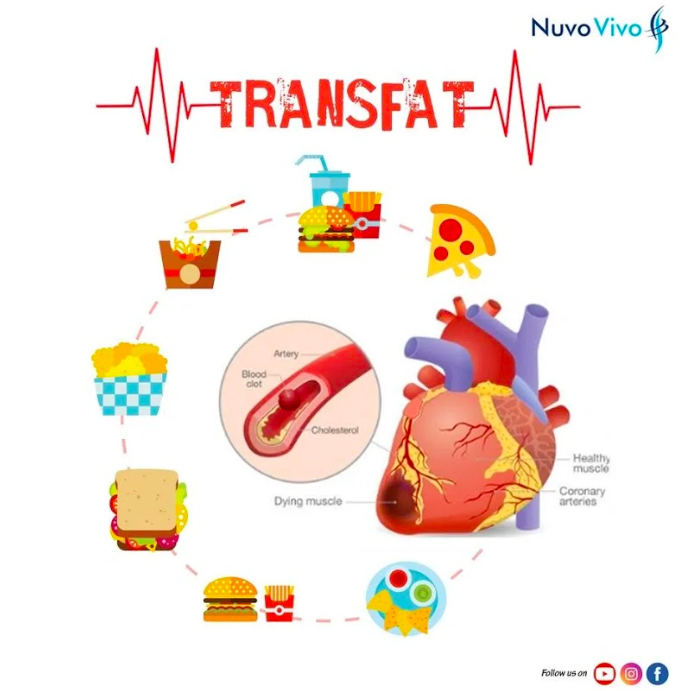Many of us have heard a lot about trans fats; some of us even know that they are unhealthy. But do you know why?
Well, transfat is used in many food items to improve the texture, increase the shelf life and bring flavour – especially to the fried food items. Trans fats are formed during hydrogenation (a process in which hydrogen is added to vegetable oil). This will increase the shelf life of the oil and the products made with it. Trans fat is also formed when unsaturated oil such as vegetable oil is heated to high temperature. This is the reason, reused and reheated vegetable oil is highly unhealthy. Dalda, Margarin etc are all transfat and are best avoided for a healthy heart!
Transfat is found to increase the bad cholesterol (LDL) and reduce the good cholesterol (HDL) thereby substantially increasing the risk of heart-related diseases. It is also claimed to reduce the insulin sensitivity of the cells, thereby causing type 2 diabetes. It also increases the risk of stroke and related complications. Transfats are easily taken up by fat cells, making weight loss more difficult. They decrease testosterone, disrupt immune function and for every 2% increase in transfat consumption, there is a doubling of the risk for heart disease.
If the Nutrition Facts label says “0 g trans fat,” it doesn’t necessarily mean it has ZERO trans fats. According to FDA rules, companies are allowed to quote 0 trans fat, even if they have up to 0.5 gram of trans fats per serving! However, they are transfat and the bad effects of the same can be substantial, especially with more serving. Some FMCG companies, instead of mentioning transfat, they mention it as “partially hydrogenated oils”. This is done, so that many of us may think that there is no transfat and it is healthy.
Infact, hydrogenated vegetable oil are transfats !

